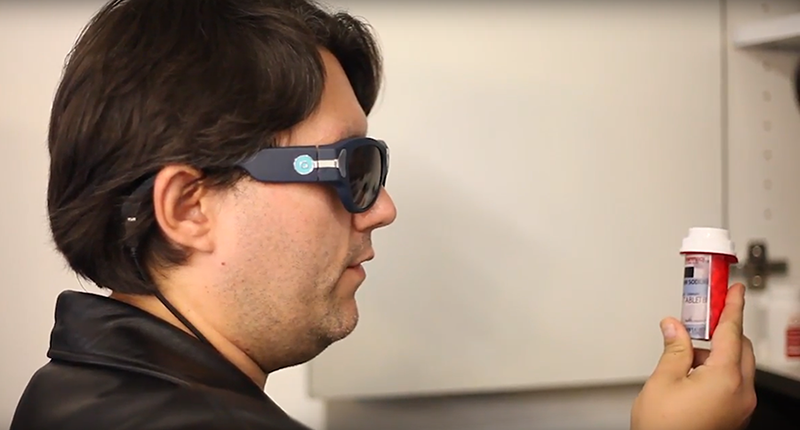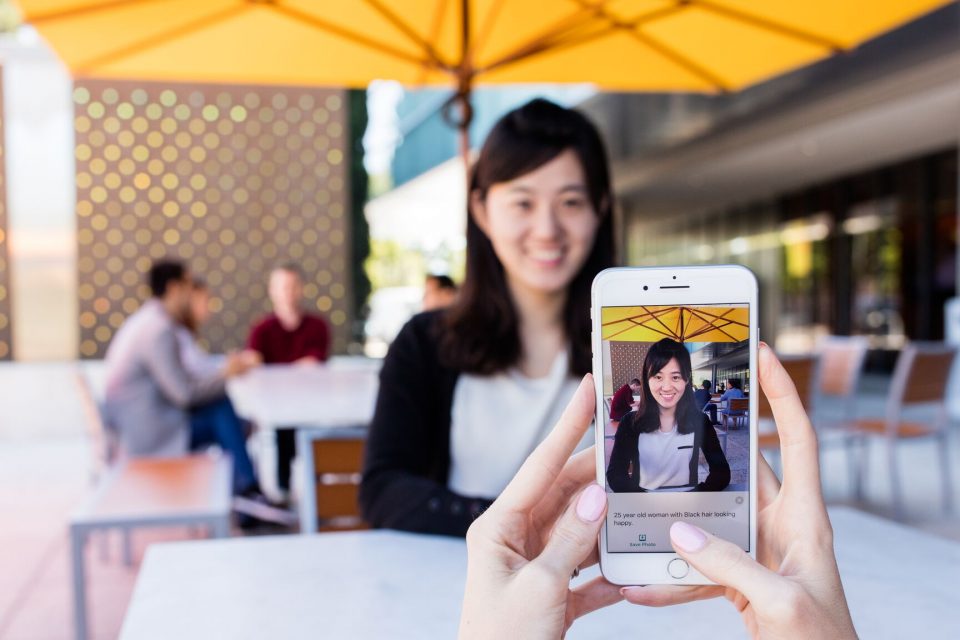Enhancing Lives With Advanced Assistive Devices for the Blind
The integration of innovative assistive devices for the blind is changing how individuals experience their environments and connect with their communities. Developments such as augmented reality wise glasses and sophisticated electronic travel help not only assist in navigation yet additionally improve overall lifestyle. These technologies cultivate a sense of autonomy and self-efficacy amongst users, allowing them to undertake everyday jobs with newfound confidence. The implications of these innovations extend past mere performance; they challenge societal understandings of handicap and independence. What does this advancement mean for the future of assistive innovation and its duty in empowering individuals?
Review of Assistive Instruments
Assistive devices for the blind incorporate a diverse series of tools and technologies designed to boost independence and boost the quality of life for individuals with aesthetic impairments. These devices provide to various requirements, from navigating and flexibility to communication and daily job management.
Among the primary categories of assistive gadgets includes wheelchair help, such as white walking sticks and overview dogs, which assist users navigate their environments securely. Electronic traveling aids, outfitted with sensors and audio responses, likewise play a substantial role in flexibility enhancement.
Additionally, gadgets that help with everyday living activities, such as flexible kitchen devices, Braille labels, and speaking watches, empower individuals to perform jobs individually. Communication aids, including screen visitors and Braille displays, facilitate access to information and enable people to engage properly with the digital globe.
Furthermore, low-tech services like magnifying glasses and large-print products remain important for lots of users. Collectively, these assistive devices serve not just as functional devices but likewise as crucial enablers of freedom, cultivating greater engagement in a world that often prioritizes sighted experiences. Their combination into life is essential for promoting inclusivity and enhancing overall well-being for those with visual impairments.
Innovative Technologies in operation
Innovation in technology has substantially transformed the landscape of tools available for people with visual problems. Among the most significant developments are wise glasses incorporated with increased truth, which provide real-time navigation support and things acknowledgment. These devices leverage progressed electronic cameras and expert system to deliver acoustic signs, boosting the user's spatial recognition and autonomy.
Additionally, mobile applications have actually arised as effective sources, allowing customers to determine currency, reviewed text aloud, and navigate unfamiliar atmospheres through verbal guidelines. Devices such as Braille displays and refreshable Braille tools proceed to progress, offering smooth connection with computers and smart devices, thus boosting interaction and accessibility to information.
Wearable technology, consisting of smartwatches furnished with voice-activated features, additionally equips users by assisting in fast access to alerts and alerts without needing visual involvement. Responsive maps and 3D printing are additionally gaining grip, offering substantial representations of rooms that aid in alignment and wheelchair training.
Collectively, these ingenious modern technologies not only improve the every day lives of visually damaged individuals however also foster higher self-reliance, inclusivity, and engagement with the wider area, thus reshaping assumptions of access. (Speech-to-text devices for low vision)
Individual Stories of Empowerment
Empowerment often emerges from individual experiences that highlight the transformative influence of innovation on people with visual impairments. Take, as an example, the story of Sarah, a young musician who restored her enthusiasm for painting with the usage of a wise walking cane furnished with obstacle detection. This tool not only facilitated her movement but instilled a newly found self-confidence, permitting her to browse public areas individually and pursue her innovative undertakings.

These narratives highlight the extensive effects that progressed assistive tools can carry daily life. By allowing people to overcome barriers, modern technology cultivates a vision near me feeling of freedom and self-respect. Such empowerment stories function as a testament to the capacity of development, highlighting how the right devices can substantially boost quality of life and open doors to brand-new opportunities for those with aesthetic impairments.
Advantages of Advanced Solutions
Just how can progressed remedies basically enhance the lives of individuals with visual problems? The integration of innovative technology into assistive gadgets considerably changes daily experiences for those affected by vision loss. These sophisticated remedies offer unprecedented autonomy, allowing customers to navigate their atmospheres with confidence. Instruments my blog such as wise canes geared up with sensors, navigating apps, and wearable innovation are designed to supply real-time comments, boosting spatial recognition and decreasing the risks related to flexibility.
Furthermore, advanced assistive innovations cultivate social inclusion by facilitating communication and interaction. Voice-activated gadgets and apps permit individuals to accessibility info and engage with their surroundings individually, breaking obstacles that formerly prevented their involvement in instructional, expert, and social settings.
In addition, the personalization and flexibility of these remedies satisfy the diverse demands of customers, thus boosting their general lifestyle. Improved performance, such as object acknowledgment and text-to-speech capacities, empowers people with visual impairments to perform jobs that they might have when discovered challenging. Eventually, advanced assistive modern technologies not just boost self-reliance and security yet likewise promote dignity and self-regard, permitting individuals to lead meeting lives.
Future Patterns in Assistive Technology
As technology remains to advance, the landscape of assistive devices for the blind is positioned for remarkable innovations that will certainly better enhance ease of access and freedom. Arising fads in assistive innovation suggest a shift towards enhanced combination of expert system (AI) and maker knowing, allowing tools to adapt to private look here user requires in real-time. These advancements are anticipated to assist in even more intuitive navigating systems that can recognize obstacles and provide audio responses, substantially enhancing exterior flexibility.
In addition, the advancement of wearable tech, such as smart glasses equipped with augmented fact, will enable users to receive contextual information regarding their surroundings, thereby improving their spatial understanding. Additionally, innovations in haptic technology assurance to produce tactile responses tools, enabling users to view information with touch, enhancing knowing and communication with their environment.
Telecommunication advancements are also paving the method for remote support options, where trained experts can offer advice via video clip calls, ensuring support is readily available. As these trends unravel, the future of assistive tools for the blind will undoubtedly promote higher autonomy, equipping people to navigate their world with confidence and ease.

Conclusion
The combination of sophisticated assistive tools for the blind represents a substantial innovation in cultivating independence and enhancing quality of life. By using ingenious technologies, these gadgets equip customers to browse their environments with better self-confidence and freedom. As the area remains to advance, ongoing r & d will likely produce also more innovative options, better changing the lived experiences of people with aesthetic impairments and advertising a higher feeling of inclusion within culture.
The integration of advanced assistive devices for the blind is changing just how people experience their surroundings and connect with their neighborhoods. The integration of sophisticated technology into assistive gadgets dramatically changes daily experiences for those influenced by vision loss.As innovation continues to advance, the landscape of assistive devices for the blind is positioned for remarkable improvements that will certainly additionally boost accessibility and self-reliance. Emerging trends in assistive technology indicate a shift towards raised assimilation of synthetic knowledge (AI) and equipment understanding, making it possible for tools to adapt to individual user needs in real-time.The assimilation of advanced assistive tools for the blind represents a significant improvement in cultivating self-reliance and improving high quality of life.